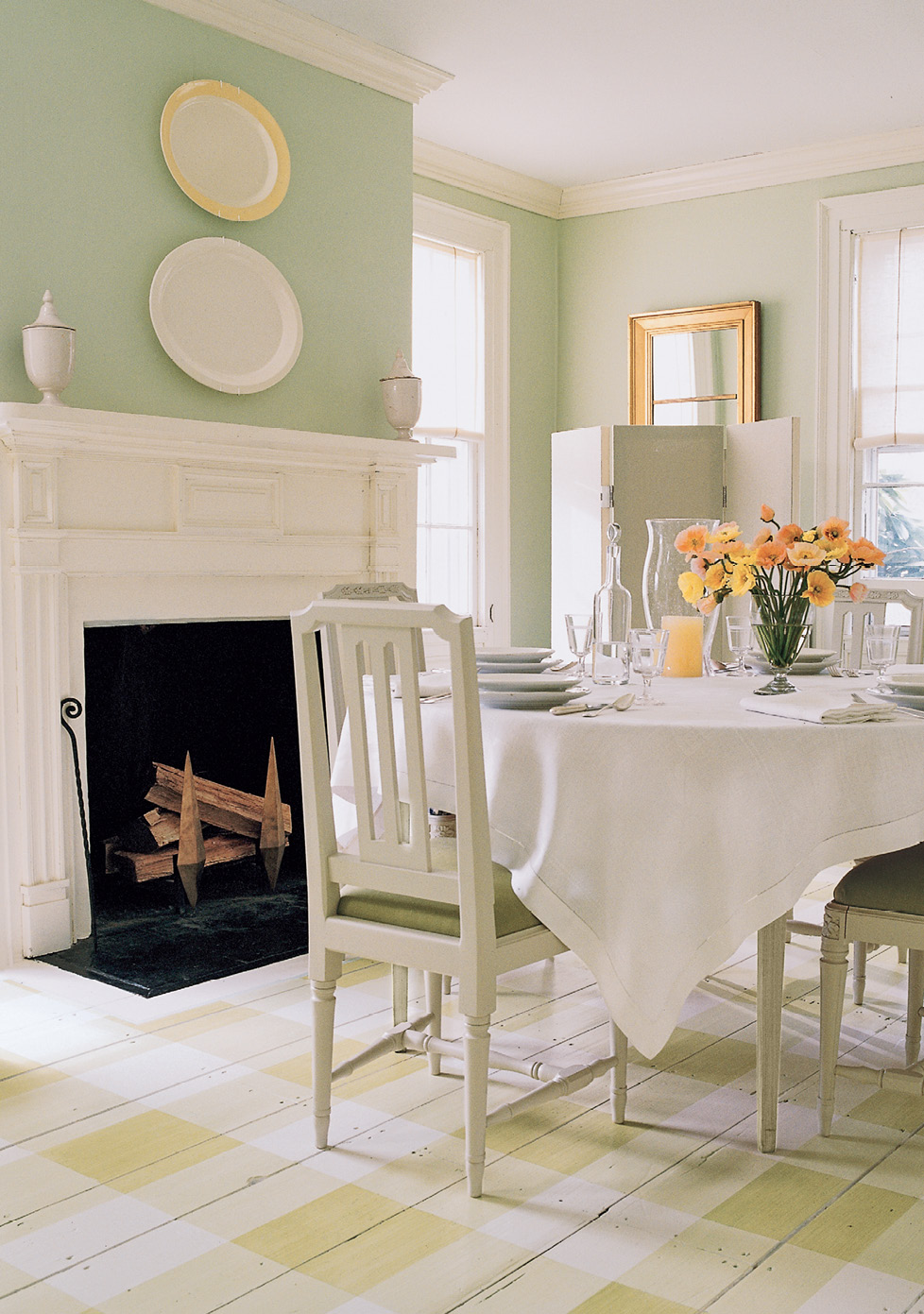
FLOOR Painting How-To
The goal is not perfection but preparation. As in, be prepared to make mistakes, most of which you won’t notice in the final result, the rest lending the project more character. If you make a mistake that feels essential to fix, simply wipe the area with a clean cloth and start over. And if this is your first foray, it’s a good idea to gain confidence by painting an out-of-the-way bedroom or an upstairs hall before tackling a more prominent area.
- 1. Tape off the baseboard and door sashes with painters’ tape.
- 2. Apply the first coat: Start by cutting in the edges with a brush, then use a brush or roller to work your way toward the door, applying paint in a thin layer. Allow the paint to dry for 24 to 48 hours, until it’s dry enough to walk on.
- 3. Apply the second coat in the same manner as the first. Once dry, determine if you need a third coat of paint. Let dry completely.
- 4. Add decorative details, using painters’ tape if needed for stripes or a pattern, like the gingham shown at right. Let dry.
- 5. Seal floor with a clear polyurethane, if desired. This is helpful in high-traffic areas, but you may want to skip this step in a bedroom.
- 6. Let the paint cure completely. This may take as little as three days or as long as two weeks depending on the humidity. You should be able to walk gently on the paint after a few days; use care when moving furniture back into rooms.
Tip
To create a gingham floor like the one pictured above, start by measuring the dimensions of the floor and making a scale drawing of the pattern. Measure the room carefully, and disregard the width of the floorboards, so the pattern is even.
Maintenance
Dirt and grit act like sandpaper on painted floors, so the key is to vacuum the surface regularly (and enact a no-shoes policy). Clean up any spills as soon as possible. Clean dirty spots with a damp cloth or mop wrung out in a mild household cleaner. If the floors are scuffed, use your go-to spray cleaner or, if necessary, a gentle abrasive, making sure to dry the floors immediately.